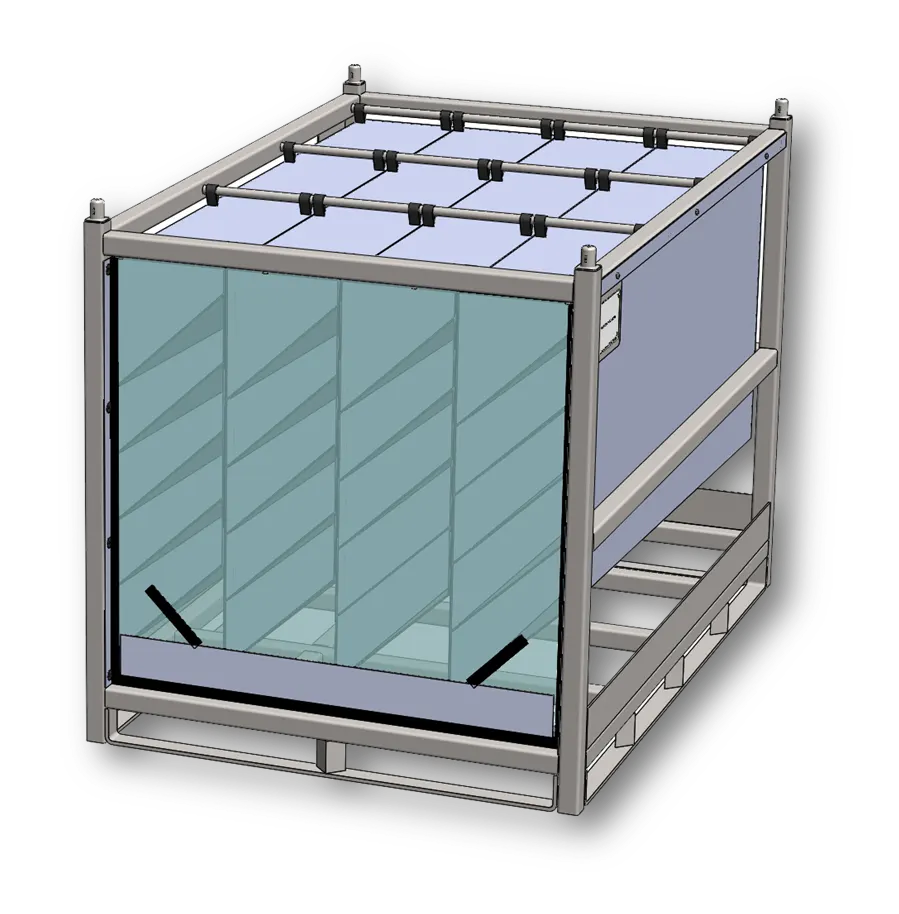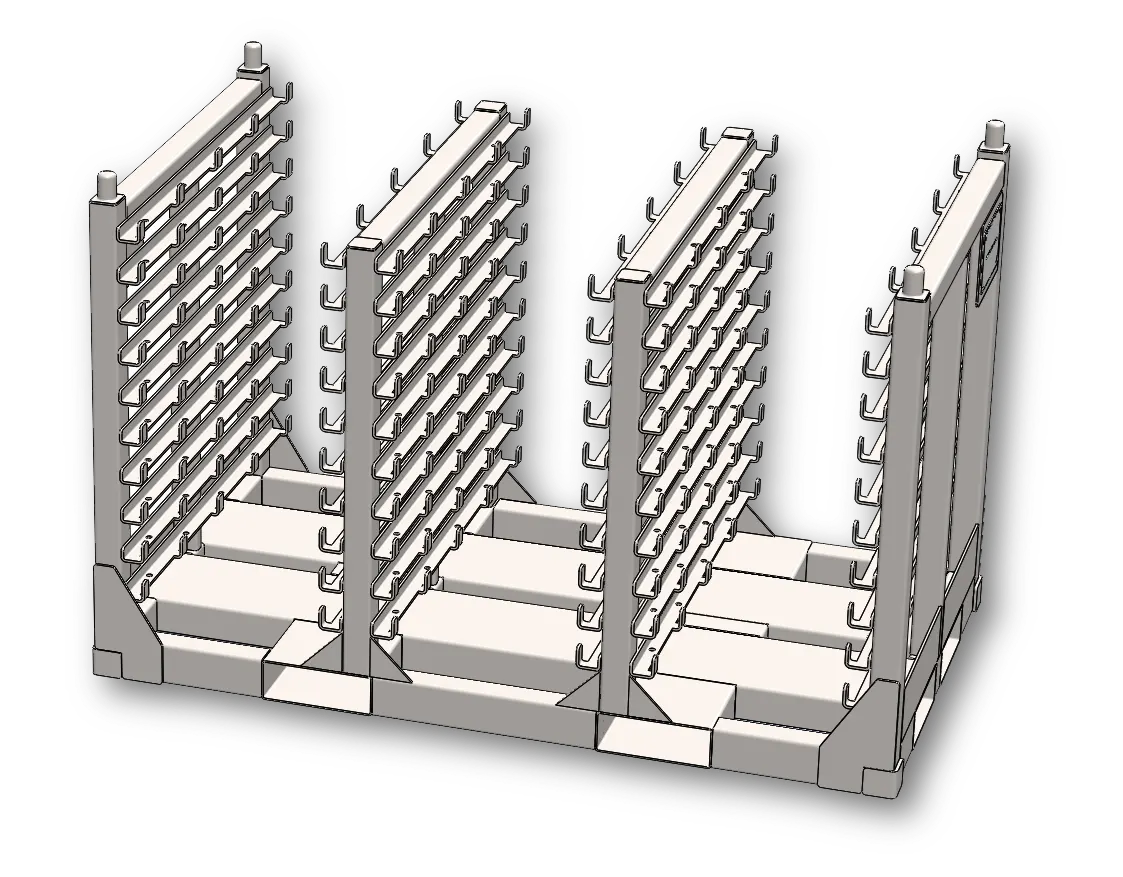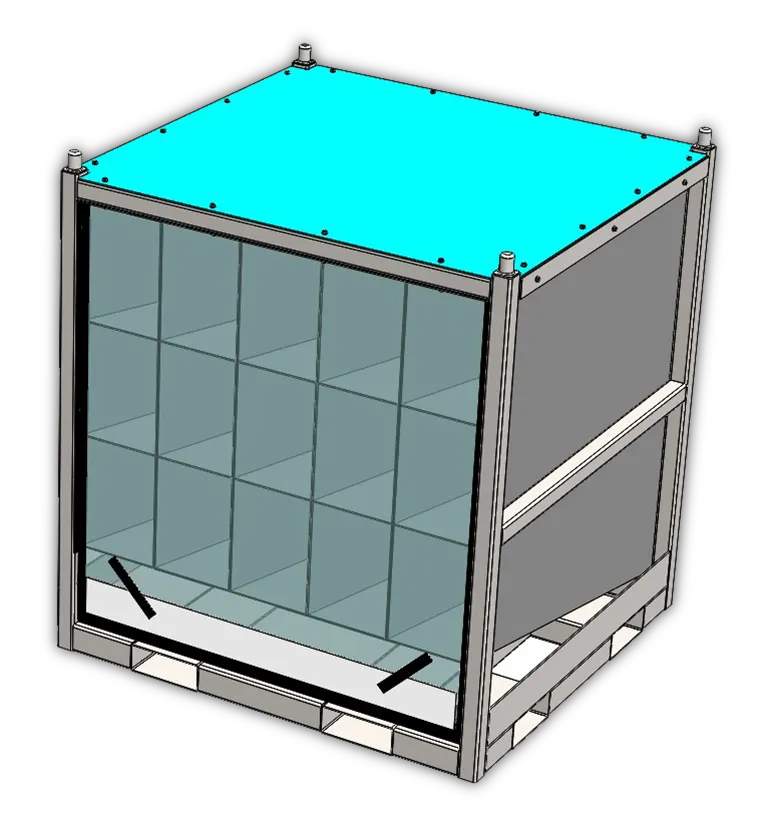Explore cutting-edge designs, practical applications, and the numerous benefits of advanced automotive racking systems.
Read MoreReturnable Transport Packaging: Efficiency in Motion
Returnable transport packaging is a system that utilizes reusable containers or packaging materials to transport goods throughout the supply chain. Instead of using traditional single-use packaging, which is discarded after use, returnable transport packaging is designed to be returned to the sender or reused for future shipments. This article will provide a comprehensive guide to optimizing efficiency through the use of returnable transport packaging.

What is returnable transport packaging?
Returnable transport packaging refers to the use of containers, crates, pallets, or other types of packaging that can be reused multiple times for transporting goods. This sustainable method seeks to reduce waste and increase logistical efficiency. Companies that employ returnable packaging systems can reduce their reliance on single-use packaging materials, such as cardboard boxes or wooden crates, which are frequently used once and then discarded.
This style of packaging works by establishing a closed-loop system. Instead of disposing of the packaging after delivery, it is returned to the sender or collection points for reuse. The packaging materials are designed to be long-lasting and cost-effective. This method relies on effective collaboration among suppliers, distributors, and customers to maintain a continuous flow of returnable packaging across the supply chain.
Returnable packaging plays a crucial role in supply chain management. It offers several benefits, including reduced packaging waste, improved product protection, and enhanced operational efficiency. Companies that include returnable packaging into their logistical processes can expedite operations, cut costs, and minimize their environmental footprint.
How does returnable transport packaging work?
Returnable transport packaging operates on a simple principle: the packaging materials are designed to be returned and reused instead of being disposed of. After the items are delivered, the empty packaging is collected and returned to the sender or designated collection points. It is then inspected for any damage or wear and tear, and cleaned if necessary, before being put back into circulation for the next cargo.
To ensure the efficient flow of returnable packaging, companies need to establish clear guidelines and processes. This includes setting up a tracking system to monitor the movement and condition of the packing. Companies can identify bottlenecks or inefficiencies in the return process by tracking the location and status of the package and taking appropriate action to address them.
Key factors to consider in returnable packaging design
Designing an effective returnable transport packaging system requires careful consideration of several key factors. These include:
- Durability: Returnable packaging materials should be designed to withstand repeated use and the rigors of transportation. They should be able to protect the products during shipment and keep them intact across several trips.
- Compatibility: To minimize damage and ensure a tight fit, the packaging needs to be compatible for the products being carried.
- Nesting and stacking capabilities: When packaging is empty, it is crucial to design it such that nesting or stacking can be done effectively. By doing this, storage space is maximized and return transportation costs are decreased.
- Ergonomics: The packaging should be designed for easy handling and stacking, both by workers and automated systems, to ensure smooth operations and minimize the risk of injuries.
- Environmental considerations: Companies should choose materials that are environmentally friendly and can be easily recycled or repurposed at the end of their lifecycle.
By carefully considering these factors, companies can design returnable transport packaging solutions that maximize efficiency and minimize waste.
Return on investment (ROI) of using returnable transport packaging
Implementing returnable transport packaging can lead to significant cost savings and operational efficiencies for businesses. While the initial investment in reusable packaging materials may be costlier than in single-use alternatives, the long-term benefits outweigh the expenses.
Some of the key areas where returnable transport packaging can deliver a positive ROI include:
- Reduced packaging costs: By reusing packaging materials instead of continually purchasing new ones, businesses can lower their packaging costs over time.
- Lower transportation expenses: Returnable transport packaging is designed for efficient stacking and nesting, allowing companies to transport a greater volume of goods in each shipment.
- Minimized packing time: Returnable packaging, with its standardized design and ease of use, can greatly cut packing and unpacking time, hence optimizing the entire logistics process.
- Improved product protection: Returnable packaging materials are durable and sturdy, providing exceptional protection for items during transit and reducing the chance of damage or loss.
- Sustainability benefits: Companies that adopt returnable transport packaging can improve their environmental credentials and demonstrate their commitment to sustainability. As a result, this can attract environmentally conscious customers and partners, leading to increased business opportunities.

Environmental advantages of returnable transport packaging
One of the primary benefits of returnable transport packaging is its positive impact on the environment. By minimizing reliance on single-use packaging materials, companies can drastically minimize waste generation throughout the supply chain.
Some of the environmental advantages of returnable transport packaging include:
- Waste reduction: Returnable packaging eliminates the need for single-use materials like cardboard boxes or wooden crates, which are often disposed of after a single use. This reduces the quantity of waste that ends up in landfills while also minimizing the environmental effect of its manufacture and disposal.
- Lower carbon footprint: The returnable transport packaging system allows for more efficient transportation of goods, with increased volume capacity and reduced fuel consumption. Ultimately, this leads to a reduction in greenhouse gas emissions and contributes to combating climate change.
- Resource conservation: By reusing packaging materials, fewer natural resources, such as timber or raw materials for plastic production, are consumed. Consequently, this helps conserve valuable resources and reduces the demand for virgin materials.
- Recycling potential: Many returnable packaging materials, such as plastic or metal, have high recyclability. When these materials reach the end of their useful life, they can be recycled and repurposed into new products, thereby extending their lifespan and lowering environmental impact.
Overall, returnable transport packaging offers tangible environmental benefits, making it a sustainable choice for businesses looking to minimize their carbon footprint and contribute to a circular economy.
How to implement returnable transport packaging in your business
Now that we have explored the concept and benefits of returnable transport packaging, let’s discuss how businesses can effectively implement this sustainable solution into their operations.
1. Assess your company’s needs and goals
Before adopting returnable transport packaging, it is essential to assess your company’s specific needs and goals. This includes assessing your present packaging processes, identifying areas for improvement, and establishing achievable goals for introducing returnable packaging solutions. Assessing your needs and goals will assist guide your decision-making process and guarantee that the chosen approach is in line with your business objectives.
2. Select the appropriate returnable packaging materials
Once you have determined the objectives for adopting returnable transport packaging, it is crucial to select the appropriate packaging materials that best suit your products and logistical requirements. Factors to consider when selecting returnable packaging materials include:
- – Material durability and longevity
- – Compatibility with the products being transported
- – Stackability and nesting capabilities
- – Ease of handling for workers and automated systems
- – Environmental impact
By considering these factors, you can choose the most suitable returnable packaging materials for your specific needs, ensuring the effectiveness and efficiency of your packaging system.
3. Design customized packaging solutions
Designing customized packaging solutions is an essential step in implementing a successful returnable transport packaging system. This involves working together with packaging specialists or suppliers to develop packaging designs that fulfill your product’s specifications, increase space use, and reduce waste. Customization can include incorporating your company’s branding, adding features for ease handling and identification, and optimizing the packaging form and size for effective stacking and nesting.
By designing customized packaging solutions, you can tailor the packaging system to your unique business needs, further enhancing efficiency and minimizing costs.
4. Implement a tracking system for returnable packaging
To ensure the smooth flow of returnable packaging throughout the supply chain, it is crucial to implement a tracking system. Utilizing technologies such as barcodes, RFID (Radio Frequency Identification), or QR codes can enable real-time monitoring of the packaging’s location, condition, and movement. This enables firms to identify bottlenecks, track the return process, and respond promptly to any difficulties that may develop. A tracking system gives useful information and insights for improving the efficiency and performance of the returnable packaging system.
Benefits of using a tracking system include:
- – Streamlined logistics operations
- – Improved visibility and control over the packaging flow
- – Timely identification of delays or inefficiencies
- – Enhanced customer service through accurate tracking and delivery updates
Implementing a tracking system ensures that returnable packaging is accounted for and optimally utilized, minimizing the risk of loss or misplacement.
5. Collaborate with suppliers and customers
Successful implementation of returnable transport packaging relies on strong partnerships and collaboration between suppliers, distributors, and customers. Creating mutually beneficial relationships guarantees a smooth flow of returnable packaging throughout the supply chain.
Key considerations for collaboration include:
- – Establishing clear communication channels and protocols for packaging return
- – Aligning expectations regarding packaging condition and handling
- – Conducting regular meetings or check-ins to address any concerns or improvements
- – Sharing data and insights to optimize packaging utilization and performance
By collaborating with suppliers and customers, businesses can strengthen their returnable transport packaging system, enhancing efficiency and customer satisfaction.

Conclusion
Returnable transport packaging offers significant advantages for businesses seeking to enhance efficiency, reduce waste, and improve sustainability in their logistical operations. Companies that embrace reused containers and packaging materials can save money, improve product protection, and reduce their environmental impact. However, effective implementation requires careful preparation, teamwork, and ongoing review. By following best practices and leveraging relevant tools and technologies, businesses can optimize their returnable transport packaging system, paving the way for more sustainable and efficient supply chain operations.

Customize Your Own & Get a FREE Estimate!
Simply e-mail us at sales@plexformps.com with all your information
OR call us today & speak to one of our packaging professionals









